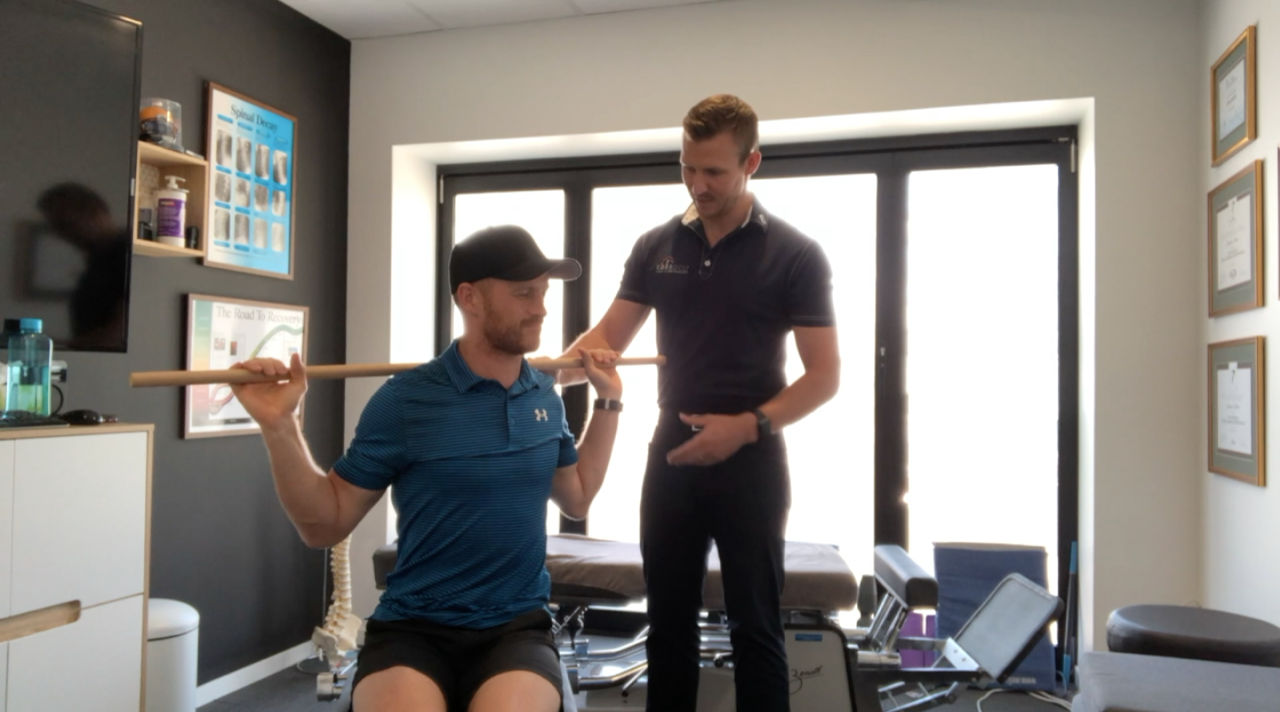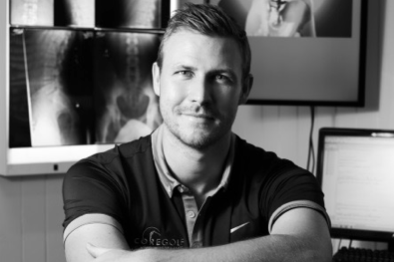IMPROVE MY GAME
Articles
How Addressing The Function Of Deep Stabilizers Can Improve Movement Quality In Your Golf Swing
Fri Jun 29, 2018 by Dr. Josh Nelson

As a Sports Chiropractor working with golfers my main goal is to create optimal movement by improving joint mobility, activating deep spinal musculature, and lowering tone in over-active hypertonic muscles. I’ll go on to explain how this applies to golfers, but first it’s worth elaborating on this process.
When a joint becomes restricted either through injury or prolonged postural distortions this leads to a decreased firing of the deep stabilising muscles (e.g. Multifidus, Rotatores etc.) and an over activity of the compensatory global muscles such as the Erector Spinae, Quadratus Lumborum and Iliopsoas.
Essentially, the joint and spine stabilisers aren’t working properly, so the muscles normally responsible for bigger tasks like joint movement have to pick up the slack in an attempt to stabilise the skeletal system. Imagine a tradesman attempting to do a surgeon’s job, it’s not what they trained to do, so it’s unlikely to end well!
My goal is to improve motion in restricted joints through manual manipulation/mobilisations which not only improve motion on a specific joint level, but also activate the deep stabilising muscles and causes a reflexive de-activation of the large compensatory musculature.
Once joint motion has been improved, it is crucial to increase the endurance of the deep stabilisers, which will help ensure that the previous state of muscle imbalance does not re-occur. This is where functional exercises come in to play, for this I use an innovative system called GravityFit (a TPI Alliance Network partner). It’s designed specifically for the purpose of firing the deep muscles whilst providing feedback on posture and movement quality, more on that later.
Application to Golf
It is my experience that a significant proportion of golf injuries occur when we swing at high speed with poor joint motion and reduced proprioceptive feedback. It is therefore vital to not only have adequate stability and mobility, but to also create correct motor patterns (which will be affected if the body isn't functioning correctly).
As an example, if we have poor Thoracic spine joint motion due to a sedentary lifestyle, this is going to cause poor activation of the deep spinal and scapula stabilising musculature. Not only does this result in poor rotation, the body will most likely compensate for these issues, creating poor motor patterns such as a loss of posture, flat shoulder plane, and other swing faults. This will also place undue stress on the shoulders and cervical spine. Below is an example of what a restricted rotation might look like in the TPI TSpine rotation test:
Solution
First up, improving Thoracic joint motion. Here I am using a manipulation/mobilisation technique that aims to improve facet joint motion and then taking this further by improving overall rotation through a Thoracic PNF stretch in a lumbar locked prayer position.
Next we look to further activate and build endurance in the deep muscles in the thorax and shoulder girdle, helping to strengthen the connection between body and arms. We are using the product I mentioned earlier, the GravityFit TPro; the backbow gives feedback on postural position of t-spine and scapulae. The bands give axial load to help stimulate those deep stabilisers in the shoulder girdle.
This will have a positive effect on Scapula, Thoracic and Cervical positioning, making it easier to activate the necessary postural stabilisers to improve golf posture.
After that we look at progressing into a more integrated movement, demonstrated here with a push and pull variation. The focus is on scapula control and trunk stability through some rotation, this time using the TPro for awareness of posture and movement quality.
Finally, we look at rotary movement patterns, demonstrated here in upright, golf posture and split stance golf posture. We now aiming to translate the improved range of motion and control through the Thoracic into a golf specific movement. Essentially bridging the gap between the treatment room, the gym and the golf course.
See below for a condensed version of the process for both the injury and the rehab solution.
Problem
Injury > Reduced deep muscle activation > Aberrant proprioceptive input
> Reduced joint motion > Compensatory Global muscle activation > Compensatory motor patterns
> Changes in swing patterns > Increased Pain/Injury OR poor consistency on the golf course!
Solution
Manual manipulation to improve joint range > Activation of deep stabilising muscles
> Reflexive de-activation of global muscle > Build endurance in deep muscles
> Controlled range of motion with stability re-established > Movement patterns clear up
> Swing patterns improve > Increased quality and consistency of strike
> Pain free and improved golf!
For more information on my Golf specific Sport Chiropractor services, check out Core Golf - http://www.coregolf.com.au/
For more on the GravityFit TPro. take a look at GravityFit.com/golf

Dr. Josh Nelson is a Sports Chiropractor and Level 3 Golf Medical Professional through the Titleist Performance Institute. He is the owner of CORE GOLF Injury & Performance based in Brisbane, Australia and he specialises in Injury Management/Rehabilitation, Golf Specific Screenings/Assessments, and Training Programs for Golfers of all ages and levels.